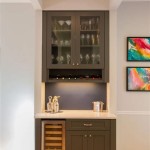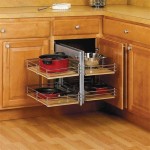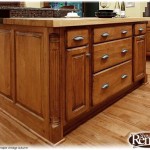Restaining Kitchen Cabinets Without Sanding
Restaining kitchen cabinets is a cost-effective way to revitalize a kitchen's appearance without undertaking a full remodel. Traditionally, this process involves extensive sanding to create a receptive surface for the new stain. However, sanding can be time-consuming, messy, and potentially damaging to delicate cabinet surfaces. Fortunately, modern techniques and products allow for restaining kitchen cabinets without the need for extensive sanding. This article outlines the process, materials, and considerations necessary for a successful no-sand cabinet restaining project.
The primary advantage of avoiding sanding is the preservation of the original cabinet finish and the reduced risk of damaging the underlying wood. Traditional sanding methods can inadvertently remove too much material, especially on cabinets with thin veneers or intricate detailing. By employing no-sand techniques, homeowners can maintain the integrity of their cabinets while achieving a refreshed aesthetic.
Before commencing any restaining project, it is crucial to determine the existing finish on the cabinets. This information will influence the choice of cleaning agents, bonding primers, and stain formulations. Cabinets finished with oil-based paints or varnishes require a different approach compared to those finished with water-based products. A simple test can be performed by applying a small amount of denatured alcohol to an inconspicuous area. If the finish becomes sticky or dissolves, it is likely shellac or lacquer. If it remains unaffected, it is probably a more durable varnish or polyurethane.
Preparation: Cleaning and Degreasing
The foundation of any successful no-sand restaining project lies in thorough cleaning and degreasing. Kitchen cabinets accumulate grease, grime, and food residue over time, which can impede the adhesion of the new stain. Failing to adequately clean the surfaces will result in an uneven finish and potential peeling or chipping in the future.
The cleaning process begins with removing all hardware, including knobs, pulls, and hinges. These items should be stored in a safe place to prevent loss or damage. Next, the cabinet doors and drawers should be removed from the frames to facilitate easier access and ensure a more uniform application of the stain.
For general cleaning, a mixture of warm water and a mild detergent, such as dish soap, is often sufficient. However, for stubborn grease stains, a stronger degreasing solution may be necessary. Trisodium phosphate (TSP) is a powerful cleaner commonly used for this purpose. However, TSP is caustic and requires the use of appropriate safety gear, including gloves and eye protection. Alternatively, phosphate-free TSP substitutes are available and offer a safer alternative.
The cleaning solution should be applied to the cabinets using a sponge or microfiber cloth. Aggressive scrubbing should be avoided to prevent damage to the existing finish. After cleaning, the surfaces should be thoroughly rinsed with clean water to remove any residual soap or degreasing agent. It is imperative to allow the cabinets to dry completely before proceeding to the next step.
Bonding Primers: Creating an Adhesive Surface
Bonding primers are essential for no-sand restaining projects. These primers are specifically formulated to adhere to existing finishes, even glossy or non-porous surfaces, and provide a receptive base for the new stain. Without a bonding primer, the stain is unlikely to adhere properly, resulting in an uneven, unattractive finish.
There are various types of bonding primers available, including water-based, oil-based, and shellac-based options. Water-based bonding primers are generally preferred due to their low odor, ease of cleanup, and environmental friendliness. However, oil-based primers may offer superior adhesion in certain situations, such as when dealing with particularly challenging surfaces or existing oil-based finishes.
Shellac-based primers are known for their excellent adhesion and stain-blocking properties. They are particularly useful for sealing in odors or stains that may bleed through the new finish. However, shellac primers are more difficult to work with and require the use of denatured alcohol for cleanup.
Before applying the bonding primer, it is important to ensure that the cabinets are completely dry and free of any dust or debris. The primer should be applied in thin, even coats using a high-quality brush, roller, or sprayer. Multiple thin coats are preferable to a single thick coat, as this will ensure better adhesion and prevent drips or runs. The primer should be allowed to dry completely according to the manufacturer's instructions before proceeding to the staining process.
Some primers are tintable, allowing them to be tinted to a color similar to the intended stain color. This can help improve the coverage and uniformity of the final finish, especially when using a lighter stain color over a darker existing finish.
Applying the Stain: Achieving the Desired Color and Finish
After the bonding primer has dried completely, the cabinets are ready to be stained. The choice of stain will depend on the desired color and the type of wood the cabinets are made of. Gel stains are often preferred for no-sand projects because they are thicker than traditional stains and tend to sit on the surface rather than soaking into the wood. This is an advantage when working with cabinets that have a non-porous finish or a thin veneer.
Before applying the stain to the cabinets, it is recommended to test it on a small, inconspicuous area to ensure that the color is as expected. Different types of wood will absorb stain differently, so it is important to see how the stain will look on the specific cabinets being restained.
The stain should be applied in thin, even coats using a brush, cloth, or foam applicator. The excess stain should be wiped away immediately after application to prevent it from pooling or creating an uneven finish. The amount of time the stain is left on the surface before wiping will affect the intensity of the color. Longer dwell times will result in a darker color, while shorter dwell times will result in a lighter color.
Multiple coats of stain may be necessary to achieve the desired color depth. Each coat should be allowed to dry completely before applying the next. It is important to follow the manufacturer's instructions regarding drying times, as this can vary depending on the type of stain and the environmental conditions.
Once the stain has dried completely, a clear topcoat should be applied to protect the finish and provide durability. Polyurethane is a popular choice for topcoats because it is durable, water-resistant, and available in a variety of sheens, from matte to gloss. The topcoat should be applied in thin, even coats using a brush, roller, or sprayer. Multiple coats may be necessary to achieve the desired level of protection.
Between coats of topcoat, the surface can be lightly sanded with fine-grit sandpaper to remove any imperfections and create a smoother finish. However, care should be taken not to sand through the stain or primer. After sanding, the surface should be thoroughly cleaned to remove any dust or debris before applying the next coat of topcoat.
The final step is to reattach the hardware and reinstall the cabinet doors and drawers. This should be done carefully to avoid scratching or damaging the newly finished surfaces. The newly restained cabinets should be allowed to cure completely before being used. Curing times can vary depending on the type of topcoat used, but generally, it is recommended to wait at least 24-48 hours before using the cabinets.
By following these steps, homeowners can successfully restain their kitchen cabinets without the need for extensive sanding, saving time, effort, and potential damage to their cabinets.

Staining Your Wood Cabinets Darker Young House Love

Gel Stain Kitchen Cabinets Without Sanding Fast Easy Diy

How To Refinish Kitchen Cabinets Without Stripping Ron Hazelton

Update Kitchen Cabinets No Sanding

Cabinet Refinishing An 8 Step Guide For Pro Painters Ppc

The Fast Affordable Way To Upgrade Your Kitchen Cabinet Refinishing

How To Re Worn Kitchen Cabinets Without A Complete Overhaul The Seattle Times

Refinishing Kitchen Cabinets Modern Refacing Made Easy Wisewood

What We Learned From A Forever Project To Refinish Kitchen Cabinets The Pecks Oregonlive Com

How To Make Rustic Kitchen Cabinets By Refinishing Them The Best Stain Color Amanda Katherine
Related Posts








